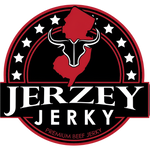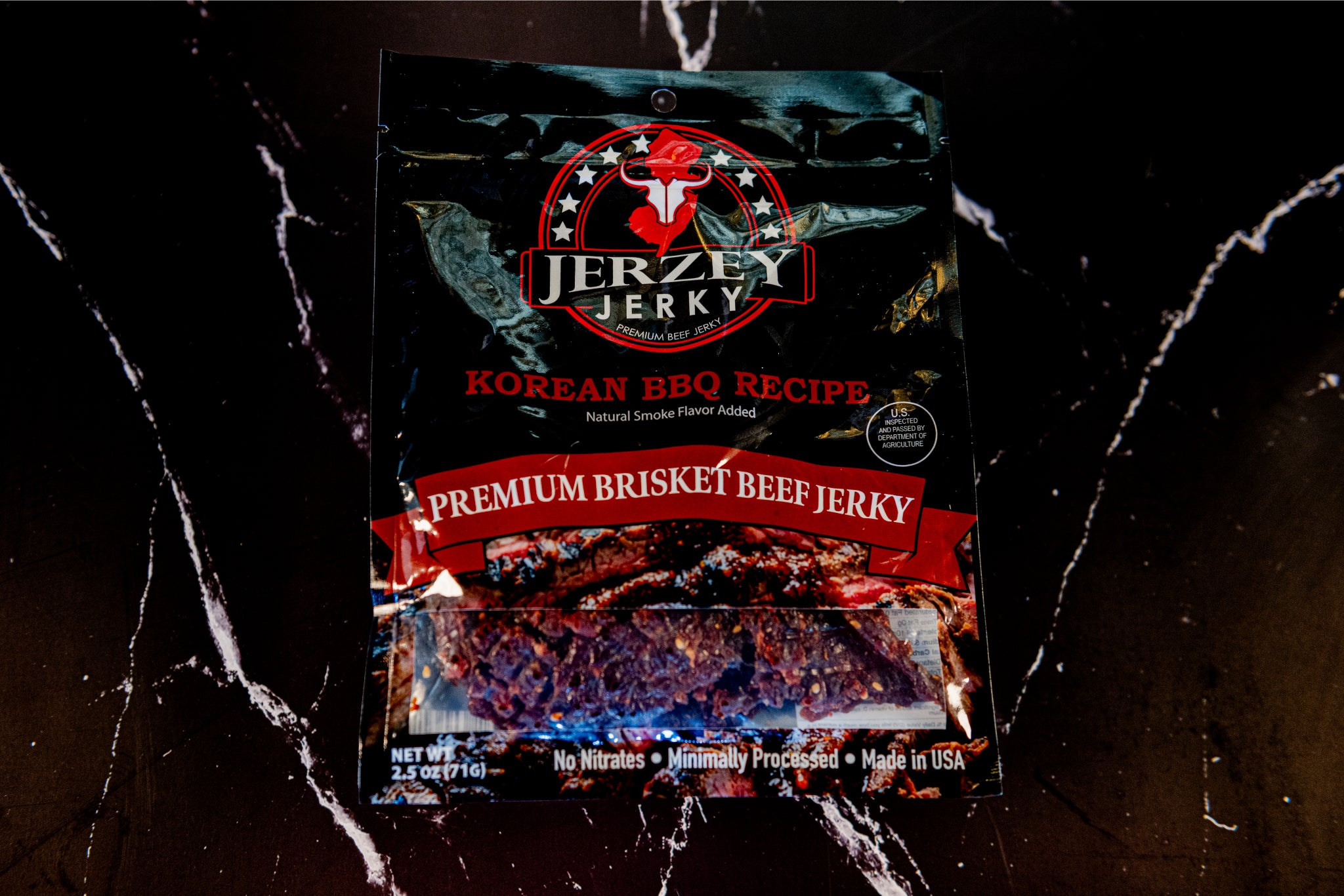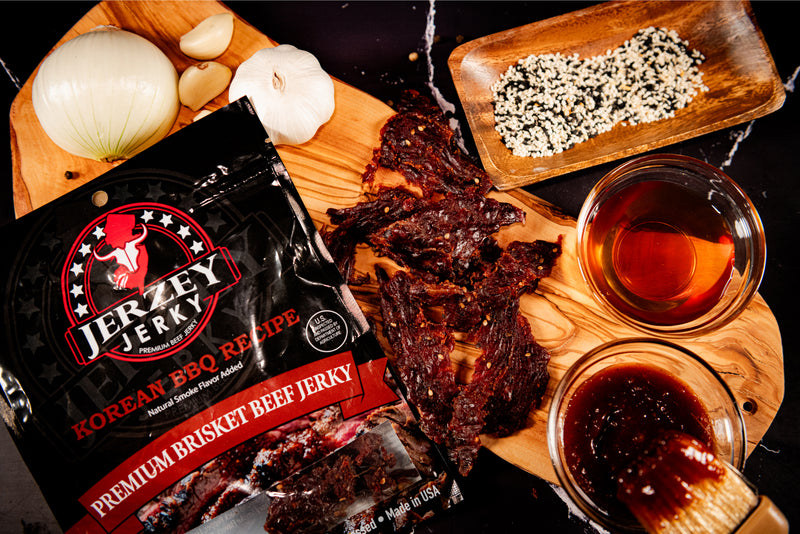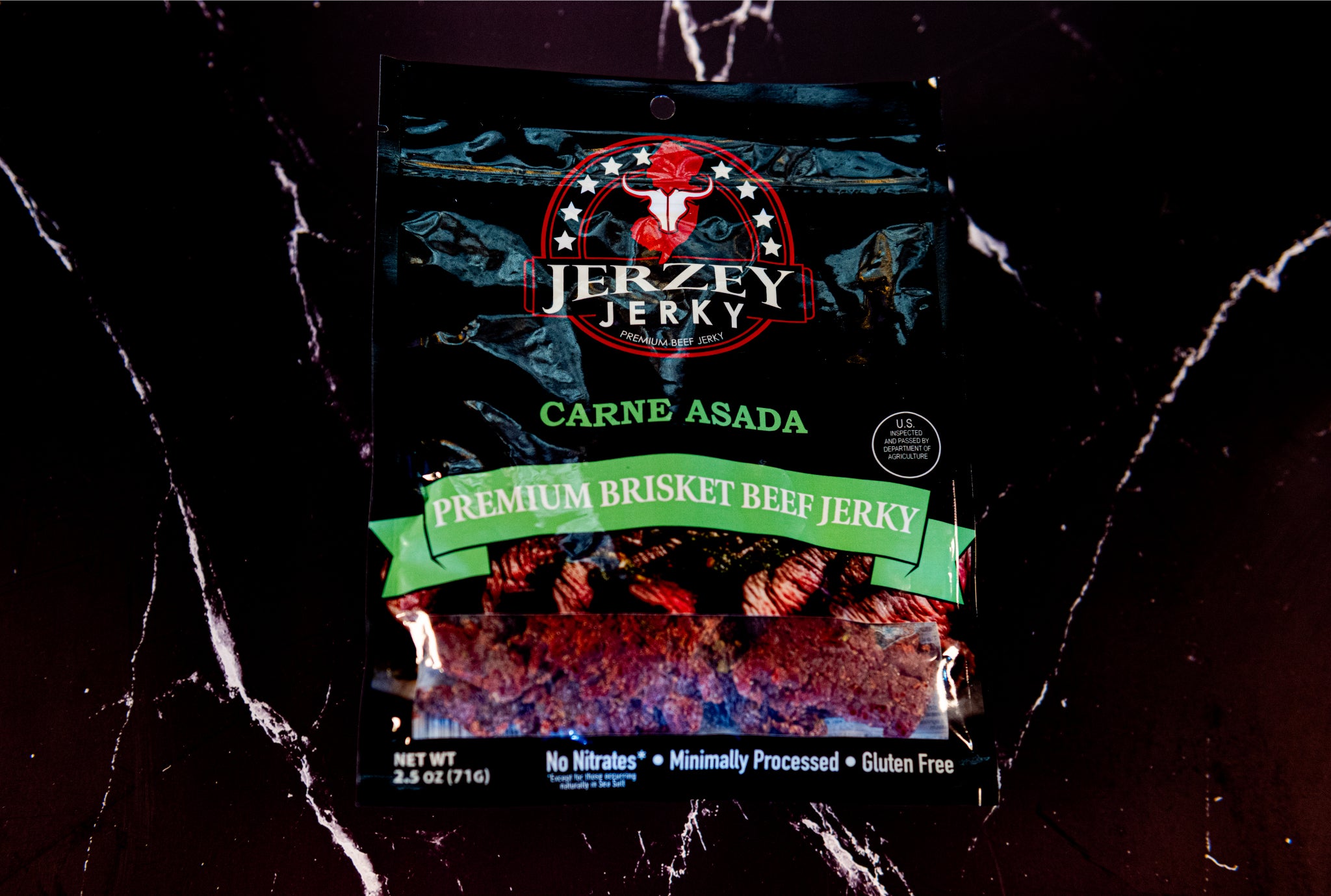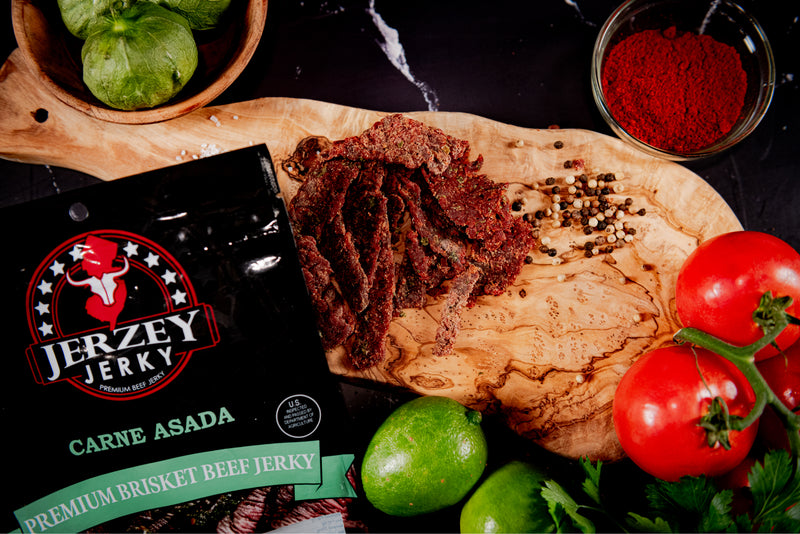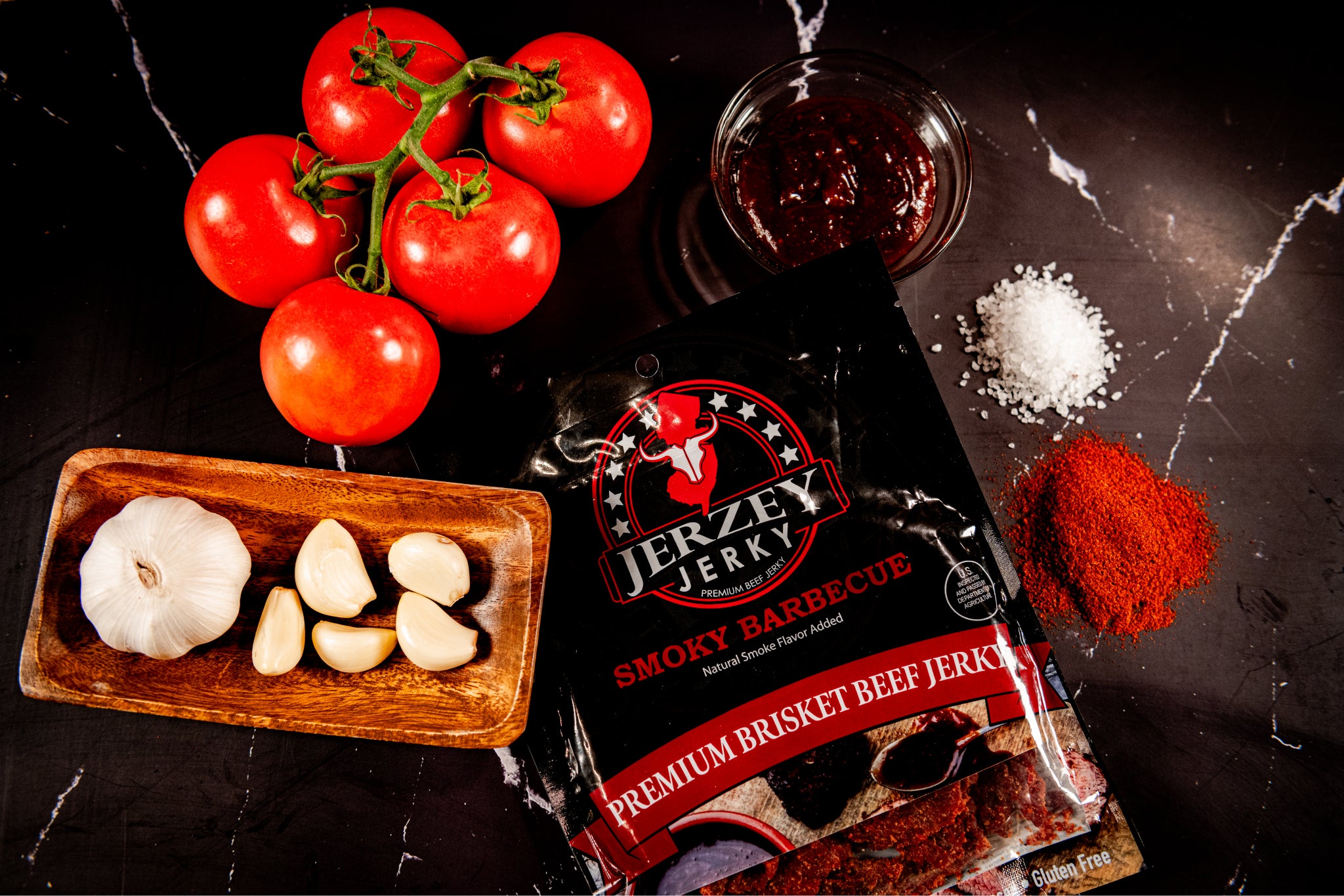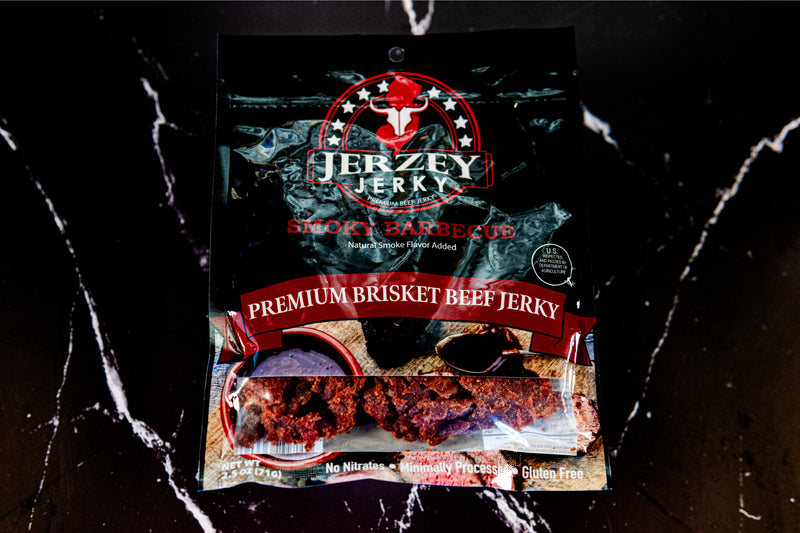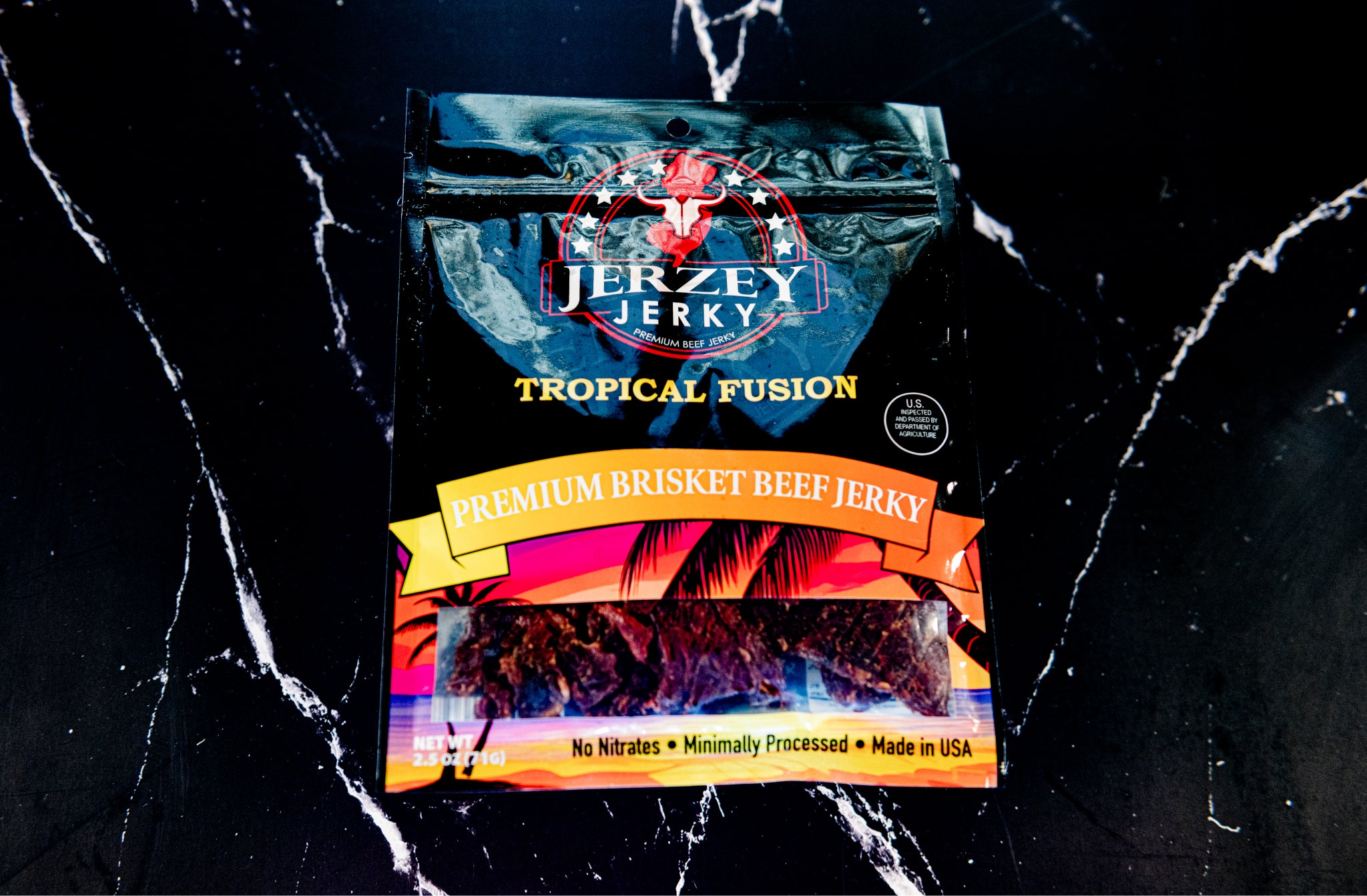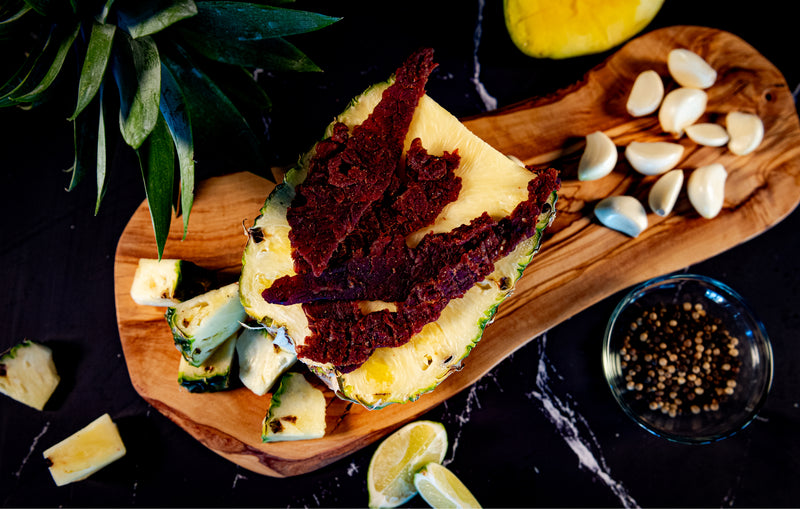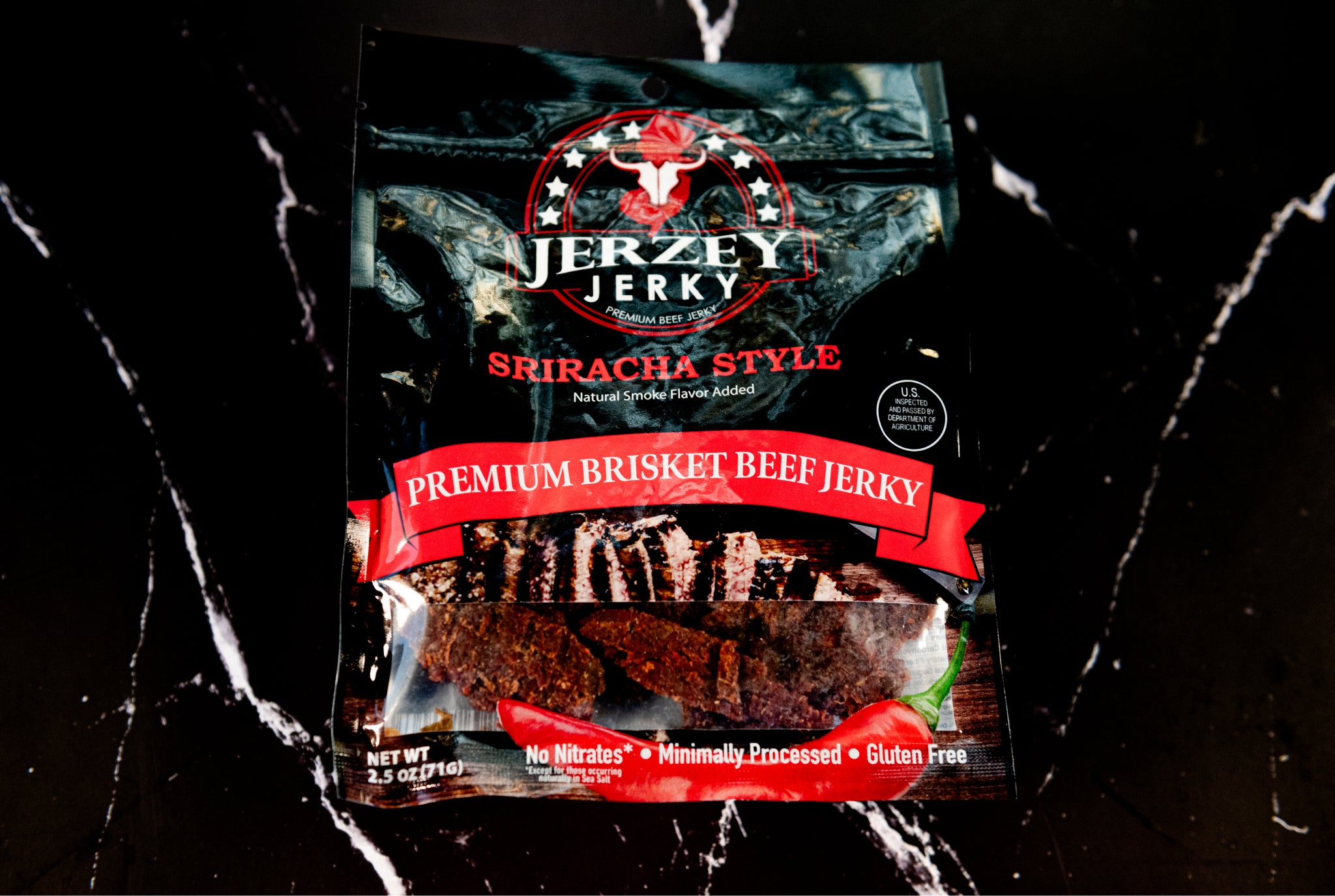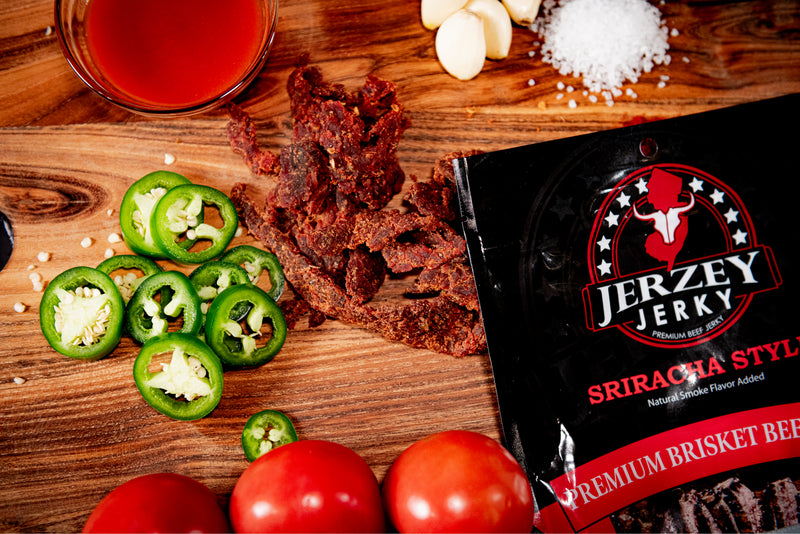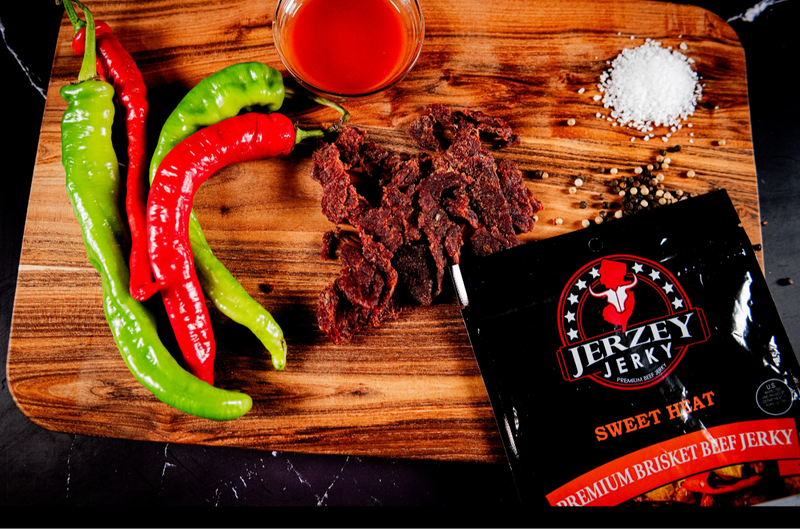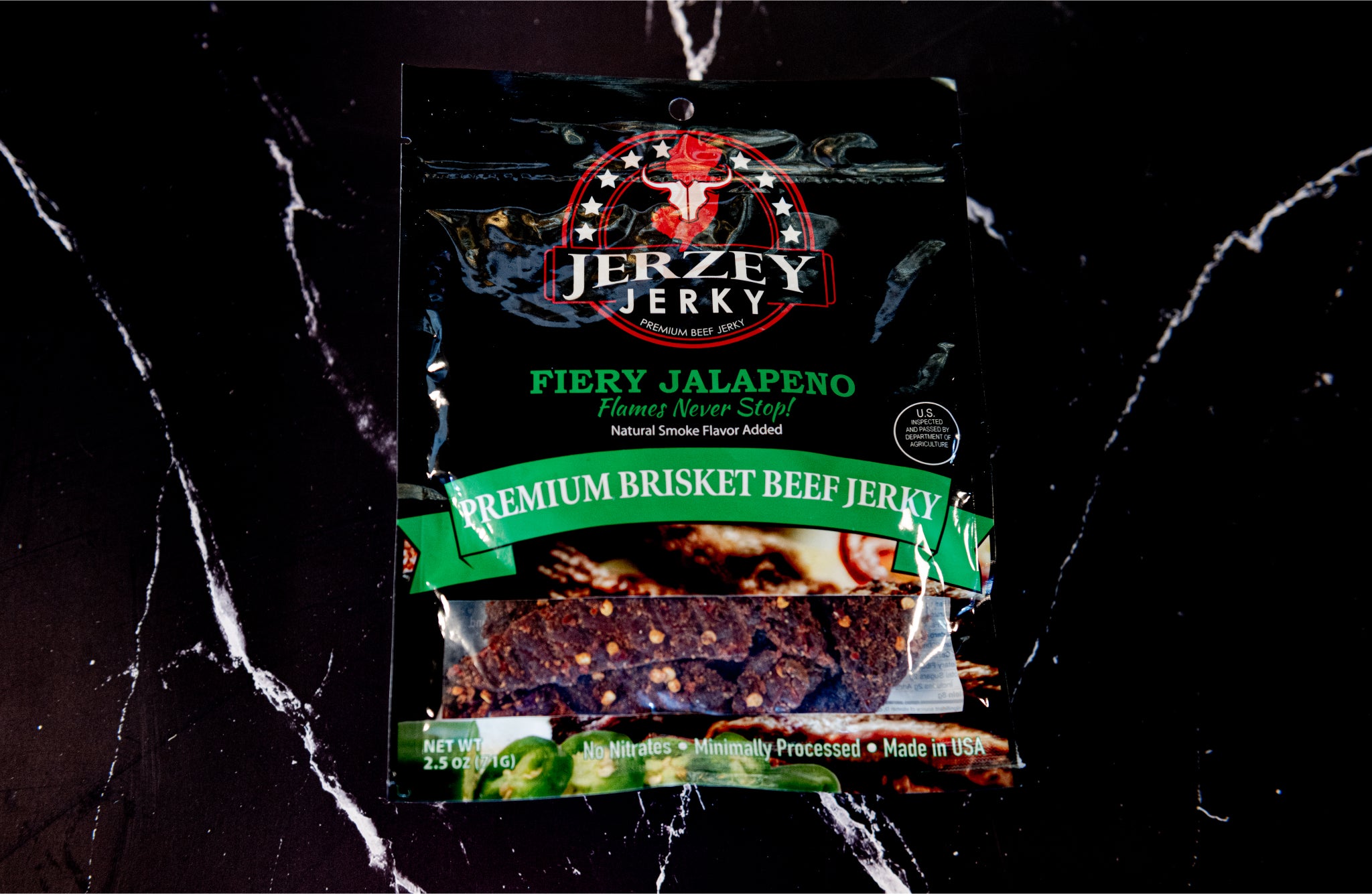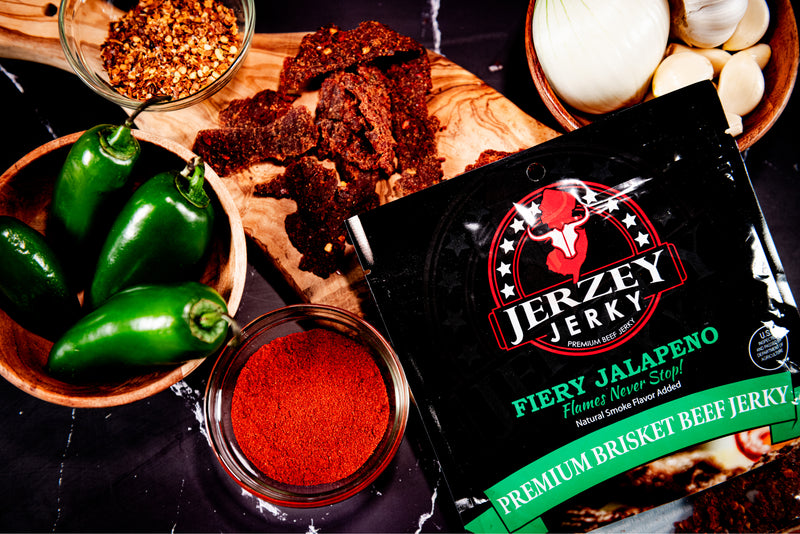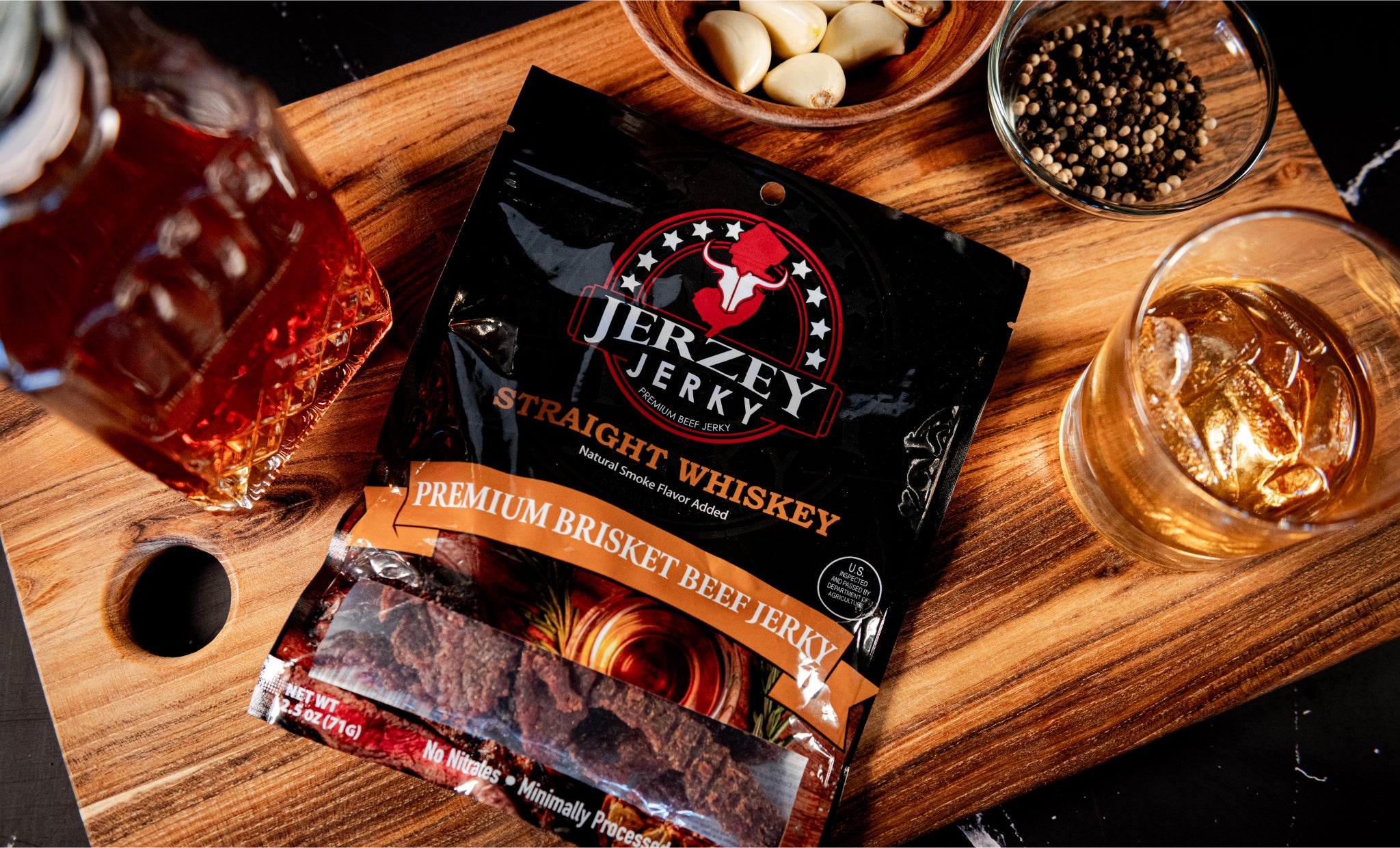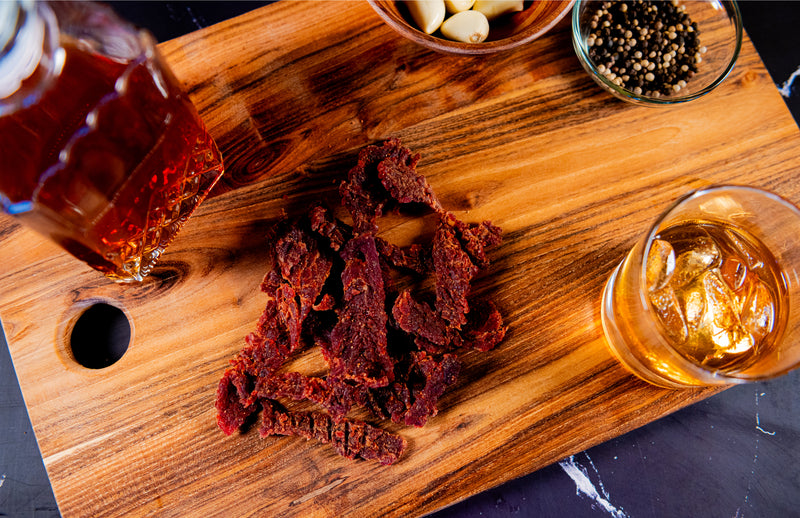
Korean Bulgogi Beef Jerky Recipe
The Korean Bulgogi Beef Jerky is a savory-sweet, bold in flavor, something that is reminiscent of the traditional Korean BBQ. The marinade of the jerky contains soy sauce, sesame oil, black pepper, garlic, and sugar. These ingredients combine to make a well-balanced and rich flavor. Seoul National University (2020) studies found that beef marinated with soy sauce boosts the appeal by 35% due to the presence of an enhanced umami flavor.
A marinade also has a fruit, a pear or an apple, to tenderize the beef with a slight sweet flavor. This fruit component assists the jerky to have a smoother texture and makes it more chewable.
The beef is marinated for several hours and then the jerky is dehydrated at low temperatures (approximately 160°F). This long drying preserves the flavors and aids in locking in moisture and resulting in a tender but chewy jerky. A study carried out by the Food Science Department of Yonsei University (2018) proves that dehydration done right not only keeps the meat tender but also protects the flavor profile.
This jerky is ideal for the fans of Korean cuisine and goes perfectly with a snack such as rice or seaweed chips or even champagne! It is a tasty and natural approach to taste the Korean BBQ flavors in a snack to carry around.
What are the Ingredients of Korean Bulgogi Beef Jerky?
Here are the ingredients of Korean bulgogi beef jerky:
-
Lean beef: 1 lb (flank steak, top round, or sirloin)
-
Soy sauce: ¼ cup (low-sodium preferred)
-
Brown sugar or honey: 2 tbsp
-
Grated Asian pear or apple: ¼ cup
-
Garlic: 2 cloves (minced)
-
Ginger: 1 tsp (fresh or ground)
-
Sesame oil: 1 tbsp
-
Rice vinegar or mirin: 1 tbsp
-
Crushed red pepper flakes or gochugaru: 1 tsp
-
Black pepper: ½ tsp
- Optional: 2 tbsp green onions, sesame seeds for garnish
Shop the best-selling Fiery Jalapeno Beef Jerky - Brisket & Straight Whiskey Beef Jerky - Brisket
Marinade Preparation
Start by mixing soy sauce, brown sugar, garlic, ginger, sesame oil and gratified Asian pear in a container. The pear assists in tenderizing the beef and providing natural sweetness to help smooth the texture. This is crucial in making juicy, delicious jerky.
Add rice vinegar or mirin to the mixture. This gives a refreshing acidity which balances out the sweet decadence and savory notes. In case you like it spicy, add chili flakes, or gochugaru (Korean chili flakes) and give this dish a little zest.
Put the beef pieces into the marinade, making sure that the pieces are coated well with it. Marinate the beef in the refrigerator for 12-24 h. Turning gently half the time so that the marinade coats the beef properly so that all the flavours get absorbed giving you a more balanced and tasty jerky.
Cutting & Preparation
Begin with lean beef, like flank steak or top round, or sirloin, which has little fat content. Fat has the potential to affect the texture and shelf life of jerky. Select firm and low-fat cuts.
To facilitate slicing, freeze the beef partially within a time frame of 1-2 hrs. The freezing process makes the meat firmer and this enables one to cut thinner and clean pieces.
Cut the beef across the grain, and with a slice width of 1/8 inch to 1/4 inch. The cross-grain cuts guarantee tenderness, whereas constant thickness helps even dehydration. When slices are too thick and not uniform, some of the slices are chewy and the others end up drying.
To give it a classic effect, sprinkle sesame seeds on the strips before drying. The sesame seeds help give an added taste and texture to the jerky making it more palatable and also attractive looking. Be sure to sprinkle them all over the meat.
What are the Drying/Cooking Methods for Korean Bulgogi Beef Jerky?
Below are the drying and cooking procedures of the Korean Bulgogi Beef jerky:
- Dehydrator: Use the dehydrator at 160°F. Put the marinated slices of beef on the trays without overlapping them. And dry for 4 to 6 hours. A dehydrator blows the air around the meat uniformly, whereas it retains flavor in the meat, but the meat dries evenly at a constant temperature, to be tender and chewy.
- Oven Drying: Preheat oven to 170°F. Leave the door of the oven open slightly to enable the escape of moisture which causes adequate air circulation. Put the pieces of beef on a baking rack or a lined tray ensuring that they do not touch. Hang up the beef and dry it for 4 to 6 hours, turning it now and then. The cold temperature guarantees the uniform drying, without burning the meat excessively.
- Smoker: It tastes better to use a smoker that uses a mild-bodied wood such as apple or cherry, to give a moderating element to smokiness to complement the marinade. Smoke 4-6 hours at 160°F. The natural fragrance of the wood penetrates the jerky, adding more depth and complexity to it.
The jerky is cooked when it is firm, dimly glossy, and chewy in all techniques. Jerky that bends without breaking ensures it has the perfect texture.
What is the Storage & Shelf Life of Korean Bulgogi Beef Jerky?
Store Korean Bulgogi Beef Jerky in an airtight pack or vacuum pack to keep it fresh. The techniques keep moisture out, retaining the texture and flavor of the jerky.
When kept at room temperature, the jerky has a shelf life of 2 weeks. Keep in a cool dry place, away from sunlight and avoid exposing it to sunlight. To enhance the shelf life, store the jerky in a refrigerator. It keeps well within 1 month in an airtight container.
To store jerky long-term, it is best to freeze it. Frozen jerky is edible within 6 months or even longer. Never eat jerky that has developed some mould, softened too much or acquired a rancid stench. These are signs of the spoilage of the jerky.
What is the Nutritional Value of Korean Bulgogi Beef Jerky?
Here are the nutritional facts of Korean bulgogi beef jerky:
- Calories: 100-120 per 1 ounce. This offers a balanced level of energy as a snack.
- Protein: 9-12g per serving. It is rich in proteins making it a good source of muscle repair and energy, especially for people who are active.
- Carbohydrates: 6–9g. The sugar and fruit (such as a pear or an apple) in the marinade are the main contributors to carbs. These add to the sweetness and a little bit of natural sugars.
- Fat: 2–4g. Jerky is usually very lean, especially compared to different cuts of beef, so it is a lean snack.
- Sodium: Moderately high. The soy sauce and seasonings provide the sodium level. This is an issue for people who monitor salt intake, more so when it is common.
Korean Bulgogi Beef Jerky is a great, high-protein snack with well-balanced flavors. Although it is high in energy and protein, one has to monitor the sodium when the banana is a regular thing. Consume it a little within a balanced diet!
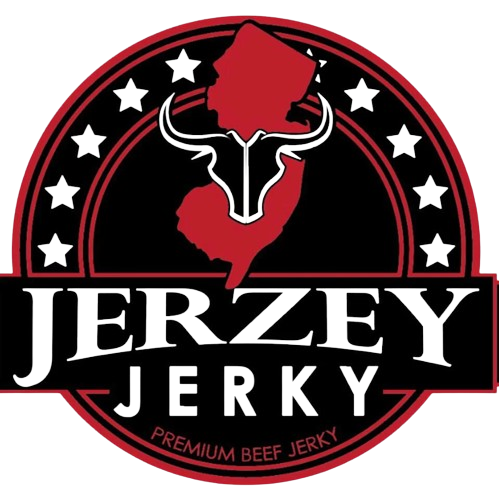
 2025-07-23
2025-07-23
 Wayne Holland
Wayne Holland

